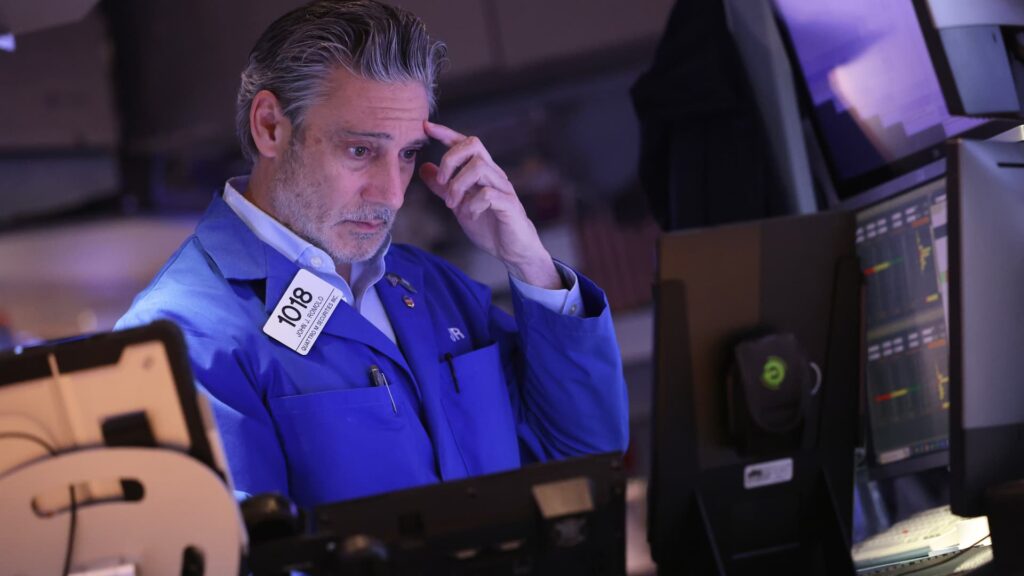
Stocks sold off Thursday after the latest economic data came in weaker than expected, but some observers say that the reaction was overdone. The major benchmarks slid Thursday after quarterly U.S. gross domestic product came in at the slowest pace in two years and inflation stayed stubbornly above target, spurring fears of stagflation that could further complicate the path of interest rate policy for the Federal Reserve. First-quarter U.S. GDP rose at a 1.6% annual rate, below the 2.4% forecast by economists surveyed by Dow Jones. The personal consumption expenditures price index, a key inflation variable for the Fed, rose at a 3.4% annualized pace, its biggest gain in a year. “This report was the worst of both worlds,” wrote Chris Zaccarelli, investment chief at the Independent Advisor Alliance. “The Fed wants to see inflation start coming down in a persistent manner, but the market wants to see economic growth and corporate profits increasing, so if neither are headed in the right direction, then that’s going to be bad news for markets.” At the lows of the session, the Dow Jones Industrial Average tumbled by roughly 700 points, or 1.8%. The 30-stock index closed lower by 375 points. Elsewhere, the U.S. 10-year Treasury yield surged past 4.7%. Market expectations of the number of interest rate cuts in 2024 dropped to just one, rather than three, according to the CME FedWatch Tool . But some observers say that stagflation concerns are overdone. While the headline GDP number missed expectations, it nevertheless showed economic growth the Fed could take in stride, they say. “This report is actually probably a little bit better than the markets are giving it credit for right now,” said Brian Nick, senior investment strategist at the Macro Institute. He noted that the core parts of GDP, such as consumption growth and residential growth, were “quite good.” “Stagflation is a combination of stagnant growth and high inflation,” Nick continued. “You’re getting the high inflation still above the Fed’s target, less so than a year ago, but still above the Fed’s target, and then you need stagnation, too, and we’re just not seeing that yet.” .DJI 1D mountain Dow Jones Industrial Average To be sure, Nick, who sees an economic downturn in his outlook, said that he does anticipate further stagnation ahead. He cited troubling signals in recent earnings results, such as Caterpillar’s most recent revenue miss. “This quarter [GDP] report is … probably not quite as bad as the headline suggests, but we think next quarter will be incrementally softer, and then [more] from there,” Nick said. Indeed, Rob Ginsberg, managing director at Wolfe Research, said that the bigger concern is evidence of persistent inflation in the first quarter, especially ahead of Friday’s personal consumption expenditure data, the Fed’s preferred inflation measure. “It’s the first data print that we’ve gotten where there’s concerns about stagflation, but I think it’s more about the inflation side of the equation than anything else right now,” Ginsberg said. “If people were worried about slowing growth and that sort of stuff, bonds would be rallying and yields would be coming in,” Ginsberg noted. “They’re actually selling off and pushing yields higher, so that to me suggests that it’s more about inflation.” On the other hand, however, Fundstrat’s Tom Lee said the soft landing scenario is intact as corporate earnings results continue to come in better than expected, with fewer inflation mentions on earnings calls. “I think the earnings backdrop has been very supportive,” Lee told CNBC’s ” Closing Bell ” on Thursday. “As painful as the last few days have been, and really the last couple of weeks, I actually think the risk/reward is positive here.” — CNBC’s Jeff Cox contributed to this report.






